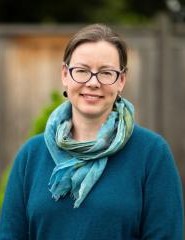
Abstract:
Recent rapid advances in observational capabilities (i.e. scanning lidar) and simulation capabilities (i.e. nested mesoscale-large-eddy simulations) are opening opportunities for new insights in boundary-layer meteorology, moving away from idealized conditions and grappling with realistic heterogenous flow conditions. Fusing advances in modeling and observation together can optimize how we design and conduct field experiments to answer critical scientific questions. We have developed a virtual lidar approach and integrated it with nested mesoscale-large eddy simulations to investigate research questions relevant to wind energy. This talk will highlight our investigations of wind turbine wakes and their behavior in complex terrain (Robey and Lundquist, 2024) as well as whether or not stable boundary layer phenomena such as upwind blockage can be assessed with current measurement capabilities (Sanchez Gomez et al. 2022), related to the Perdigão and AWAKEN field experiments. This open-source virtual lidar tool, coupled with simulations, can provide a means for assessing measurement capabilities in advance of measurement campaigns.
| Attachment | Size |
|---|---|
| Julie Lundquist | 609.14 KB |

